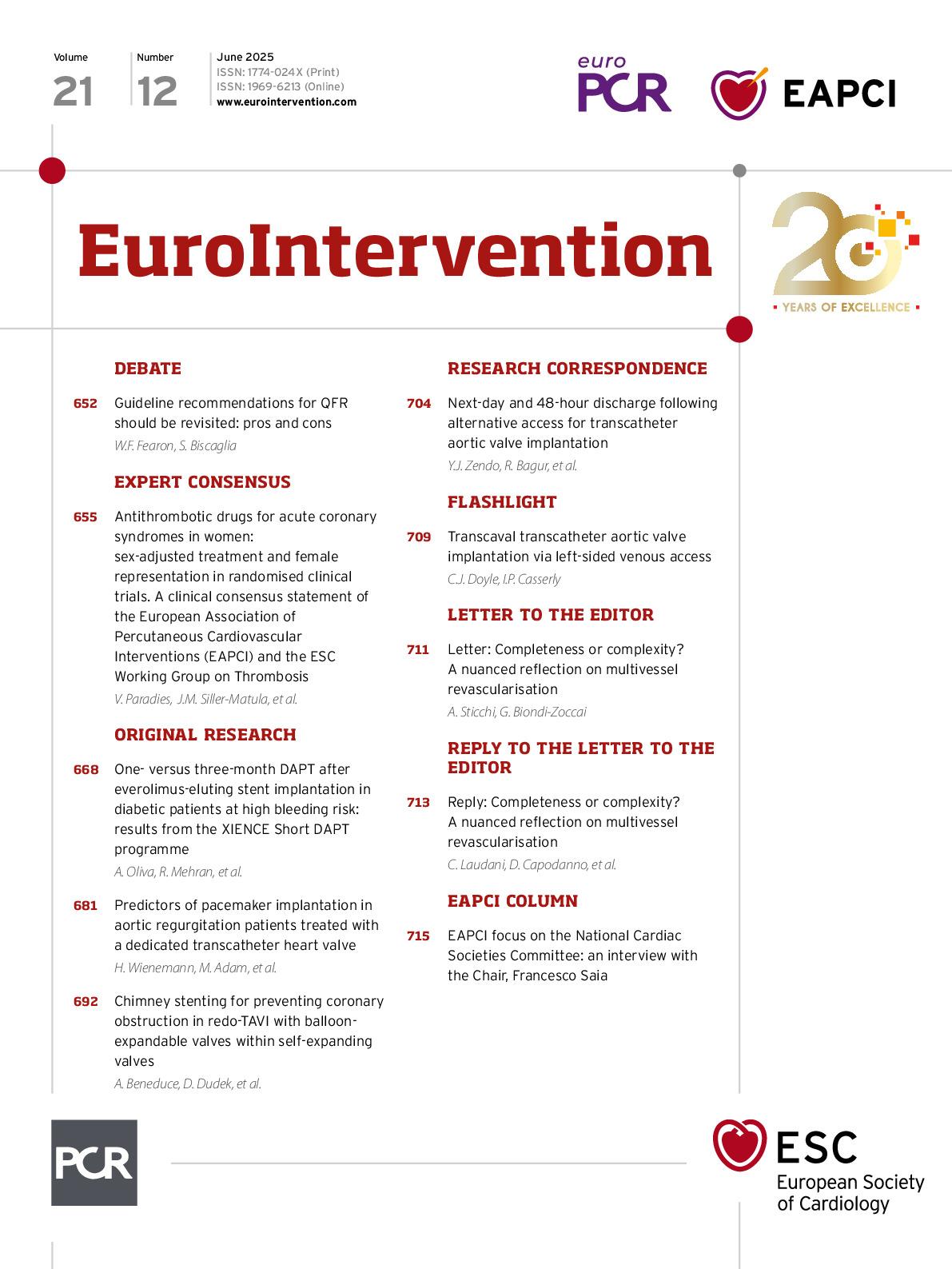Abstract
Background: In patients with diabetes mellitus (DM) and high bleeding risk (HBR) undergoing percutaneous coronary intervention (PCI), the optimal duration of dual antiplatelet therapy (DAPT) remains uncertain.
Aims: We sought to compare early DAPT discontinuation in DM and non-DM patients enrolled in the prospective XIENCE Short DAPT programme.
Methods: The effects of 1- versus 3-month DAPT on ischaemic and bleeding outcomes were compared using propensity score stratification. The primary endpoint was a composite of all-cause death or myocardial infarction (MI) at 1 year. The incidence of Bleeding Academic Research Consortium (BARC) Type 2 to 5 bleeding was the key secondary endpoint.
Results: Out of 3,352 included patients, 1,299 (38.8%) had DM; diabetic patients had a higher 1-year incidence of death or MI (DM vs non-DM: 10.1% vs 6.6%) and similar BARC 2-5 bleeding (DM vs non-DM: 9.5% vs 9.2%). With 1- versus 3-month DAPT, the incidence of death or MI did not statistically differ in DM patients (adjusted hazard ratio [adjHR] 0.70, 95% confidence interval [CI]: 0.47-1.05) and non-DM patients (adjHR 1.26, 95% CI: 0.87-1.81), although heterogeneity by DM status was evident (p for interaction=0.015). BARC 2-5 bleeding was numerically lower with 1-month DAPT in both groups (DM: adjHR 0.67, 95% CI: 0.45-1.01; non-DM: adjHR 0.78, 95% CI: 0.56-1.07; p for interaction=0.973).
Conclusions: Among HBR patients with DM undergoing PCI, 1-month DAPT, as compared to 3-month DAPT, was not associated with an excess of fatal or non-fatal MI and even reduced the occurrence of bleeding. These findings should be interpreted in the context of a predominantly stable patient population with low procedural complexity and may not be generalisable to higher-risk cases.
Sign up for free!
Join us for free and access thousands of articles from EuroIntervention, as well as presentations, videos, cases from PCRonline.com

